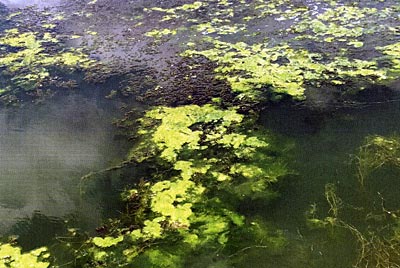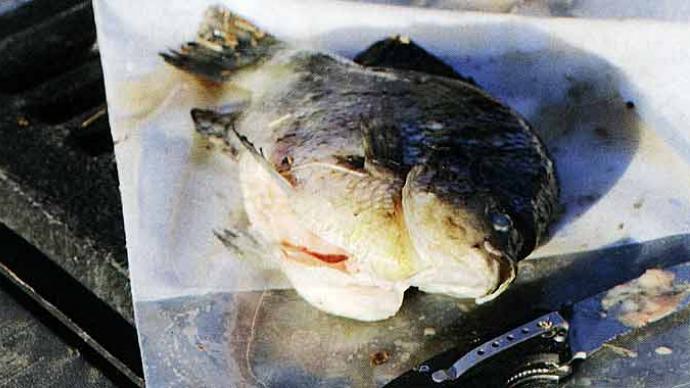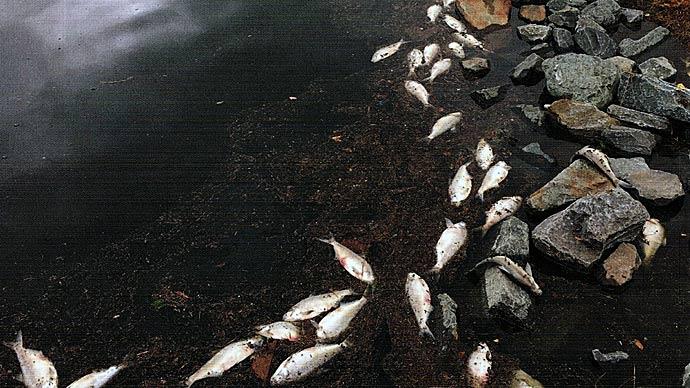
In the last week of July, Pond Boss world headquarters got a call from a frantic pond owner in the northern reaches of the Dallas/ Ft. Worth Metroplex. She was losing some of her precious catfish and didn't know why. I returned the anxious lady's call promptly.
She had catfish coming to the pond's edge, gasping for air. She'd already lost more than 50 of her giant whiskerfish, and it sounded like more were about to perish. Logically, it's an easy assumption she was having a fish kill. Her question was, "Why?"
But I started asking questions.
"How big is your pond?"
"About one acre."
"How many fish did you stock? Do you feed them? Do you have aeration? Do you have a well?" I peppered her with quite a few questions on the quest to determine the problem. My problem-solving mind works dichotomously— if this, then that. Trying to crack a case like this starts with a process of elimination. Seems she'd stocked 250 catfish fingerlings four years ago, feeds them by hand faithfully, raised them like family, and hasn't harvested any, and yes, she has a water well.
She aerates with a bottom-diffused system that sounded reasonably efficient. She'd bought it through a reputable manufacturer, according to their specifications. It's on a timer, from 10:00 at night until 7:00 in the morning. She feeds a good brand of fish food. Rains flushed the pond several times over the spring. I couldn't see how water quality degradation from over-feeding her fish could be the main culprit to cause these fish to be dying from an oxygen depletion.
For this emergency situation, she'd turned on her well, stopped feeding the fish, and started running the bottom-diffused aeration system full time.
Then, she offered one more telltale hint.
"There's green dye all over the rocks around the pond. I think my neighbor dyed their pond and now it's all over my big rocks."
Red flag.
I steered our course toward that ominous clue. "Does the 'green dye' look like someone spilled paint in the water?" She answered in the affirmative.
After we drilled down further and eliminated most other causes, the clues pointed to a massive blue-green algae die-off. Several days before a big rain, her bloom had all the characteristics— low visibility, bright green color, mild odor.
Then the cool summer rainstorm knocked out her algae bloom, and that green dye was actually dead, decaying blue-green algae that releases a toxin when the cell walls burst. Her bloom was dense enough to cause problems with her fish. They were being poisoned by a natural event.
What could she do about it? Not much—it's one of those things you can best prevent by managing the bloom before it becomes so dense. I advised her to spend some time seeking guidance on the Pond Boss forum and our Resource Guide, and to consider using beneficial microbes and enzymes to expedite the process of algae degradation. I also told her to keep moving the water as best she can and the problem would dissipate.
When you are trouble-shooting, it's not always easy to actually identify the specific problem. It's especially difficult to see a problem before it happens.
I do a live broadcast most Wednesdays on the Pond Boss Facebook page from 6:30-7:30 P.M. CDT. People join in from all over and they toss questions my way. I try to answer each one as they come across the feed. Recently, a guy asked if he, "Could aerate part of a 30-acre lake?" Troubleshooting this idea requires a fundamental understanding of how the thermocline works in a lake. During summer, most lakes form a thermocline about halfway down. If this lake averages six-feet of depth, with a maximum slightly less than 20 feet, you can pretty well bet the thermocline will be somewhere around 8-10 feet deep. If this pond manager were to install a system designed for a ten-acre lake into a 30- acre gem, several things would happen. First, the system won't break down the thermocline. If the diffusers are set beneath the thermocline, the bubble plumes will regurgitate toxic, anoxic water toward the surface and mix it with localized healthy water. But more anoxic water would slide over from the rest of the lake underneath the thermocline, and the distant part of the lake would form more anoxic water quicker than the aeration system can move it. That's not a smart thing to do. Ironically, odds are high that fish would die in the aerated part of the lake.
Pondmeisters also have to troubleshoot aquatic plant life. Job One is to properly identify the plant. Job Two is to determine if the plant is truly a problem. Most of the time, plants are a problem if we think they are, not actually because they impact the biology of the pond. As you think about what to do, be sure to know that the course you choose will have consequences. Make sure the solution to your problem doesn't create a new problem.
Here's an example of that.
Early last spring, a pondmeister texted some images of algae mats floating on top of his pond all around the dock. He wanted to treat them with an algaecide. I explained the photos he sent showed dead algae. No sense in killing dead algae. So, he got his trash pump and shot some high-pressure lake water all over the mats and broke them up around his dock. As the mats came apart, swirled, and moved, he saw more living algae growing beneath the dead mats. He went to a local farm store, bought an algaecide and knocked out the algae. What he didn't realize is that his filamentous algae crop was growing all over and around a dormant mat of bushy pondweed, waiting for its opportunity. When the owner knocked out the algae, he opened a big door for that pondweed, and it took advantage. That stuff spread like crazy and he spent more dollars to take it out about a month later. Had he identified the problem he could have treated both and taken care of it early on for less dollars.
Another recent phone call came in from a new landowner who found the perfect place for a new home, where he could build on an older, existing 7-acre lake. He wants the kiddos to go fishing, and maybe swim in it. Rain keeps it full, and he was looking to buy some fish to stock his new slice of heaven. He was ready to spend some good money on a bad idea. My first question, "Does it have fish in it now?" All I heard on the phone was a pregnant pause followed by, "I don't know."
This guy could spend hundreds or thousands of dollars stocking fish and that money could literally disappear down the gullets of a bunch of stunted bass. I recommended a full electrofishing survey to figure out what he has, and then decide whether or not to stock any fish. Heck, he may just need to harvest some. We never know.
Trouble-shooting isn't easy. It's not like looking at a flat tire on your vehicle when you need to leave for work in five minutes. That answer is easy. The flat isn't the problem, getting to work on time is.
When you get ready to problem-solve any pond issue, it's easy to consider the obvious. Don't look past the obvious, but also don't assume that's the actual problem. Take the first story. The lady's catfish were coming to the edge, gulping for air. The obvious assumption is they are suffocating, so we need to get more oxygen into the water. That's what this pond owner did. That's a good decision. Start the water well and increase aeration around the clock. She could have done what the algae-guy did, and gotten a trash pump, started pumping water, and moving it around.
I'm so glad she called our office so we could have a conversation. The problem wasn't actually a lack of oxygen. Her fish were dying because of a toxic volume of decaying blue-green algae. While all those steps she took were helpful to get the water back in shape, it didn't truly address the problem. Blue-green algae was the problem. Everything else was a consequence.
The best problem-solvers figure out they have a problem before the consequences hit. In the dying catfish case, the problem was a dense algae bloom in the middle of summer. That was the problem. Had she known, she could have issued a pre-emptive strike with a mild dose of algaecide, followed with enzymes and beneficial microbes to alter the natural balance of microscopic stuff growing in hot summertime water.
Think along the same lines when you evaluate plant life and fish growth. If you know how these things should be, you can predict shifts in population and be ready to push your precious waters in the direction where they need to go.
It sure beats pushing wheelbarrows of stinky dead fish to the back forty to feed the buzzards.
Reprinted with permission from Pond Boss Magazine



